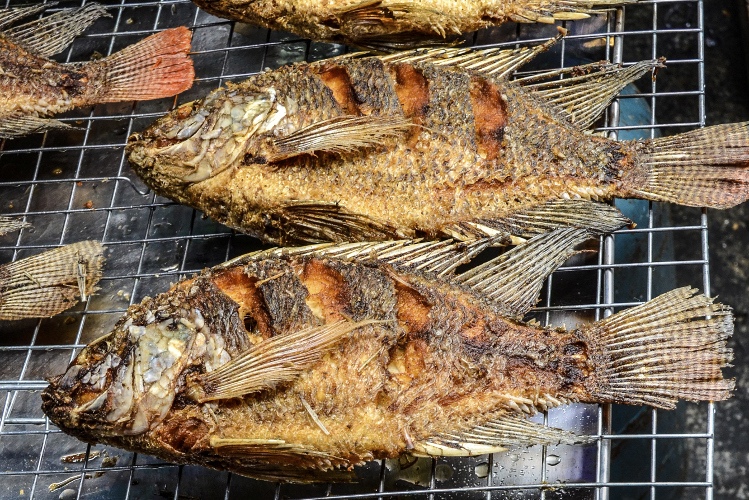
Since Langkawi is in the state of Kedah, known as the rice bowl of Malaysia for its contribution to around half of the country’s total rice production, it’s not surprising that rice is the main staple here. The local version of the Malay dish nasi tomato (rice cooked with tomato and spices) is one of Langkawi’s specialities, and is prepared slightly differently here than elsewhere in Malaysia; you'll typically find it served with beef rendang (a dry coconut milk-based curry) or ayam masak merah (chicken in red sauce), acar nenas (pineapple and peanut salad) and vegetable and chickpea curry.
Being an archipelago and all, Langkawi also enjoys access to an abundant supply of fish. Barbecuing is the most popular way of cooking it, and sometimes the fish are stuffed with a delicious coconut sambal. Look for signs reading ikan bakar (barbecued fish) – these are outdoor barbecues at lunchtime restaurants and food stands.
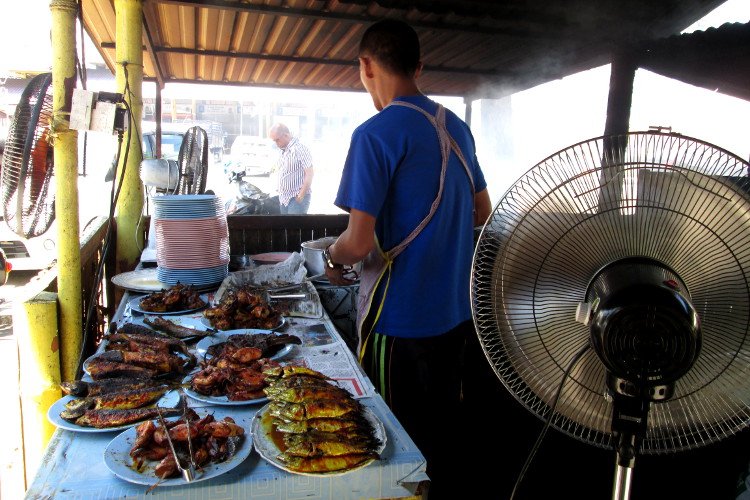
Langkawi is geographically closer to Thailand than to the Malaysian mainland, and one place where the Thai influence on the local cuisine is perhaps most evident is at the island’s produce markets, where typically Thai ingredients such as basil and lemongrass can be picked up for a pittance. The largest of these wet markets is near the airport at Padang Matsirat, and anyone wanting to have a stab at cooking the local fare would be wise to do their shopping here. Be warned, the sheer variety of exotic produce on offer – including prickly rambutan, mangosteen, salak (snake fruit) and durian – can be overwhelming, and even common Western vegetables like squash and spinach can be difficult to identify.
Be prepared for the market’s meat section with its whole chickens and slabs of meat piled high on dubiously hygienic outdoor tables. You'll probably smell this – not to mention the mountains of fresh fish sold here too – before you see it. The green lights in the sea at night that are visible from Pantai Cenang are used by local fishermen to attract squid, which can also be purchased here.
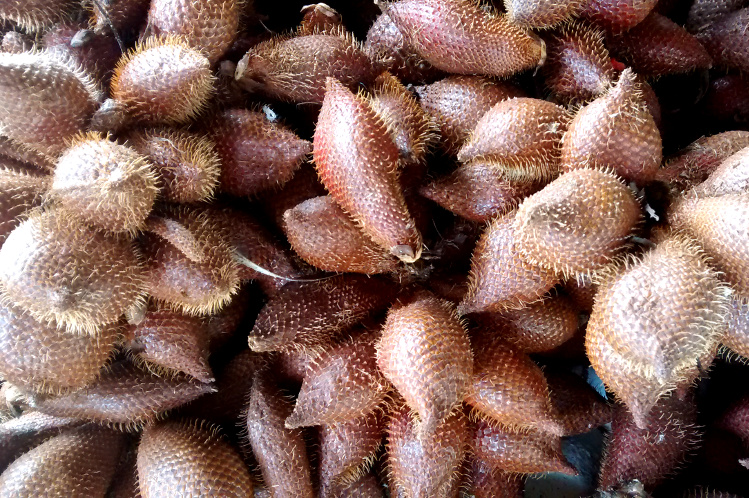
The best time of day to sample local food in Langkawi is lunchtime – the earlier the better – at one of the island’s buffet-style Malaysian restaurants. In contrast, the evening meal here is often a more simple affair of fried rice or noodles. Siti Fatima is the most well-known of the lunchtime buffet restaurants, but Selera Akmal in Padang Matsirat (5 Jln Lapangan Terbang) is also a good bet.
At these places, an array of between 30 and 50 dishes are laid out from about 10.30am, and by 12.30pm restaurants are generally packed. The system is to take a plate with rice and then pile it high with your choice of the dishes on offer, before paying (usually no more than a bargain RM10 for a full plate). Expect various fish options, including ikan bakar, as well as chicken and mutton curries, bean curd, okra, cucumber, eggplant, kacang botol (wing beans), potatoes with anchovies, beansprouts with pan-fried coconut and pajeri nenas (pineapple curry), usually with different sauces and spicy sambals available for each dish. Wash it down with fresh fruit juice – the green apple juice is always good.
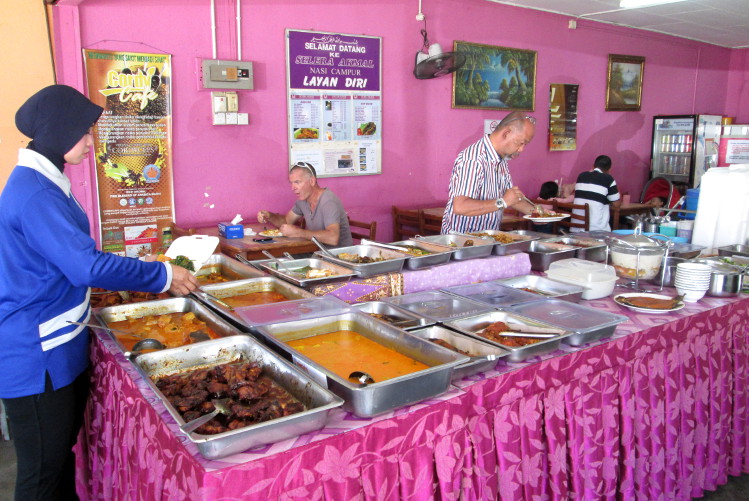
To really explore Langkawi, it’s a good idea to hire a car or motorbike. As you drive around, look out for roadside stalls dotted around the island selling banana fritters, curry puffs and chicken satay. From about 2pm or 3pm, women also tend to set up stalls in various locations (opposite the mosque in Padang Matsirat is a popular spot) selling often-garishly coloured bite-sized cakes known as kueh.
If you find yourself in Langkawi during Hari Raya (the end of Ramadan), take the chance to try traditional home-cooked local food, as stalls pop up in the late afternoon every day selling specially prepared dishes.
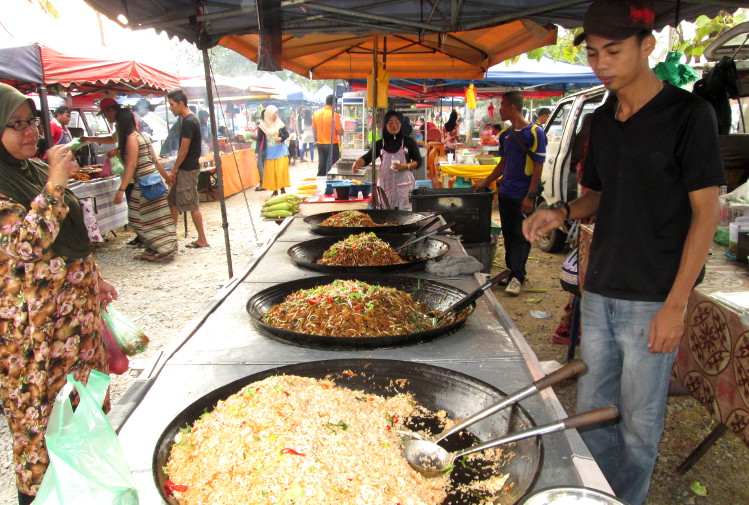
Langkawi’s night narket
One of the easiest ways to sample local food in Langkawi is at the roving night market, which is held at a different point on the island on each day of the week from about 6pm until 10pm. On Monday the market is at Jalan Makam Mahsuri Lama, in the centre of the island near the MARDI Agro Technology Park, and on Tuesday it moves to Kedawang, just east of the airport. On Wednesday and Saturday it is based in Kuah town, Thursday at Pantai Cenang, Friday in Padang Lalang in the north of the island near Pantai Pasir Hitam and Sunday at Padang Matsirat, near the airport. Come for the satay chicken stands, fresh fruit and juices, barbecued meats, stir fried rice and char kway teow (stir fried noodles with prawns and egg).
Note that there is no dining area at the night markets – locals take their packets of glutinous rice, noodles and barbecued meat home to eat – so pick up a picnic dinner to enjoy elsewhere. Luckily, there is no shortage of beautiful places in Langkawi from which to scope out the perfect spot for a takeaway feast.